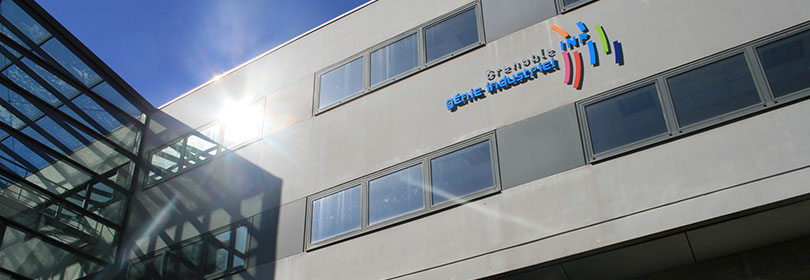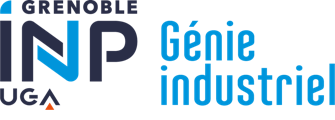
They ensure that raw materials arrive at the production units and final products reach the customers on time, at lowest costs with good quality of product and service. Though many researches have been done to improve freight transportation systems and logistics, but there still is a lot to do, especially when several transportation subsystems - freight, public and individual- are considered as one single transportation system.
1. Stacks of ITS
It is useless to say that the problems are as hard as the stakes are numerous and of importance: (1) economically speaking, companies want to have their raw materials, products and employees arriving on time. (2) At the Society level, transportations systems should allow individuals to go everywhere they want and to arrive quickly to their tasks with as less fatigue as possible. Transportations systems are also a mean for the governments to give access to underdeveloped areas. (3) Finally, good transportation systems should have less environmental impacts such as green house gas emissions, by proposing the possibility to use multi-modal transportation alternatives (walking, cycling, catching tram or bus) instead of individual vehicles and reducing at the same time the chronic traffic congestions of urban networks.
2. Networks and services of ITS
Indeed, if we consider transportation systems, we have to look at the railroad, roads, pedestrian and cycling paths, river/sea and air networks representing usually a transportation mode. Each network is connected to the others via transfer terminals (bus/train stations, peers/ports, airports). Today, there are two types of services over these networks for both freight and passengers: (1) the first one is the on demand service. A quite easy example is the taxi service. Note that personal car can be considered as in this type of service. It offers a maximum of flexibility but at the expense of higher costs and environmental impacts. (2) The second type is the service with consolidation. The services are planned with regular frequencies, the freight or the passenger flows are consolidated via hubs. Although this type of service is less flexible than the on demand one in terms of schedule, it has the advantage to better fill the transportation resources such as vehicles and containers. So wasting less resource, carriers can propose lower prices.
3. Three planning levels and Information System of ITS
In today transportation systems, due to the complexity of the whole problem and its different planning horizons and level of investments, a transportation system is decomposed into three levels.
a) Strategic and long term planning such as the physical network design which involves political decisions and heavy investments. For instances, one has to decide where roads/bus or tram lines should be added to the network to reduce the traffic congestion? How to reroute dynamically the vehicle flow in case of traffic jams on the road network? Where to locate car-tram parks to allow users to transfer from individual vehicles to trams? Where to locate logistic hubs around an urban area to gather freight flows before delivering goods to final clients in an urban logistics system?
b) Tactical or mid-term planning (more in public and freight transportation systems) such as the service network design which involves carriers' decisions. Which services should be proposed to satisfy the user/client demands? With which level of quality of service (on demand basis or regular frequency in public/freight transportation, fluidity of traffic flow in roadway system)?
c) Operational or short-term planning (important part in public and freight transportation systems) which involves the commitment of resources such as fleet and crew/driver schedulings, vehicle routings in last kilometer good deliveries of urban logistics.
In order to solve these problems, an efficient Information System is needed to retrieve from and broadcast to the network and its sub-networks relevant data and information. For this purpose, sensors are located over networks and/or in smart vehicles to capture on-line information which are sent to the Information System to be analyzed on-line to have real-time control (via traffic signals) or influence (via information panels, individual mobile devices or even controlling directly smart cars) traffic flows of the networks. Off-line analyses allow having predictions on demands and thus better dimensioning networks and services to respond to that demands. Figure 1 shows the architecture of the whole Intelligent Transportation System. No doubt to say that this is the future of Intelligent Transportation System and the problems beneath are quite challenging.
4. Optimization and simulation tools for decision aid-making in ITS and some applications
The Industrial Engineering school of Grenoble Institute of Technology (Grenoble INP) proposes several courses on prediction (Probability and Statistics), optimization (Mathematical Programming, Operations Research, Flows algorithms, CPLEX, Heuristics and Metaheuristics), simulation (Petri Net, Queueing Systems, ARENA), information systems applied to Transport logistics. Several important student projects of LOSII (an option renamed LOAD presently) sponsored by industrial partners have been developed in this field [6, 7, 8]. The laboratory G-SCOP supported by the regional Research Cluster GOSPI (Gestion et Organisation des Systèmes de Production et de l'Innovation) has projects on Service Network Design for Freight [1, 2, 3] and Public [4] Transportation Systems at the tactical planning level. Some others are on disruption management for commercial airlines at the operational level [2] and on Location-Routing planning of vendors integrating three planning levels [5].
Industrial and Institutional Partners: Airbus, Amadeus, Conseil Général de l'Isère (CG38), ESCOLLE BETON, HPDG SN, IMAGINA International.
Contact: Van Dat Cung, laboratoire G-scop
References
[1] S. Schrenk, T. G. Crainic, V-D. Cung, G. Finke. Comparison of Different Network Design Formulations for a Freight Transportation with Asset Management Problem. In Book of Workshop in honor of Catherine Roucairol. Publisher Hermès, in french, May, 2010.[2] S. Schrenk. Contributions to Transport Service Network Design. PhD thesis. Grenoble INP. In French. 2010.
[3] N. Teypaz, S. Schrenk, V-D. Cung. A Decomposition Scheme for Large-Scale Service Network Design with Asset Management. Transportation Research Part E: Logistics and Transportation Review. Volume 46, Issue 1, January 2010, pages 156-170.
[4] N. Teypaz. Solving Public and Freight Transportation Problems: Modellings and Algorithms. PhD thesis. Grenoble INP. In French. 2008.
[5] A. Waserhole, J. F. Rivera, V-D. Cung, P. Lemaire. Solving a Multi-level Decisional Location-Routing Problem. Conference of the French Society of Operations Research and Decision Aid-making ROADEF2011. In French. 2011. Submitted.
[6] Master degree LOSII student project. Optim'Isère: Optimization solution for the transportation of disabled students. Student report of the Industrial Engineering school of Grenoble INP. In French. 2008.
[7] Master degree LOSII student project. Optimizing a Concrete Delivery problem. Student report of the Industrial Engineering school of Grenoble INP. In French. 2007.
[8] Master degree LOSII student project. Software for Assistance in Logistical Solutions Analysis (SALSA). Student report of the Industrial Engineering school of Grenoble INP. In French. 2005.


